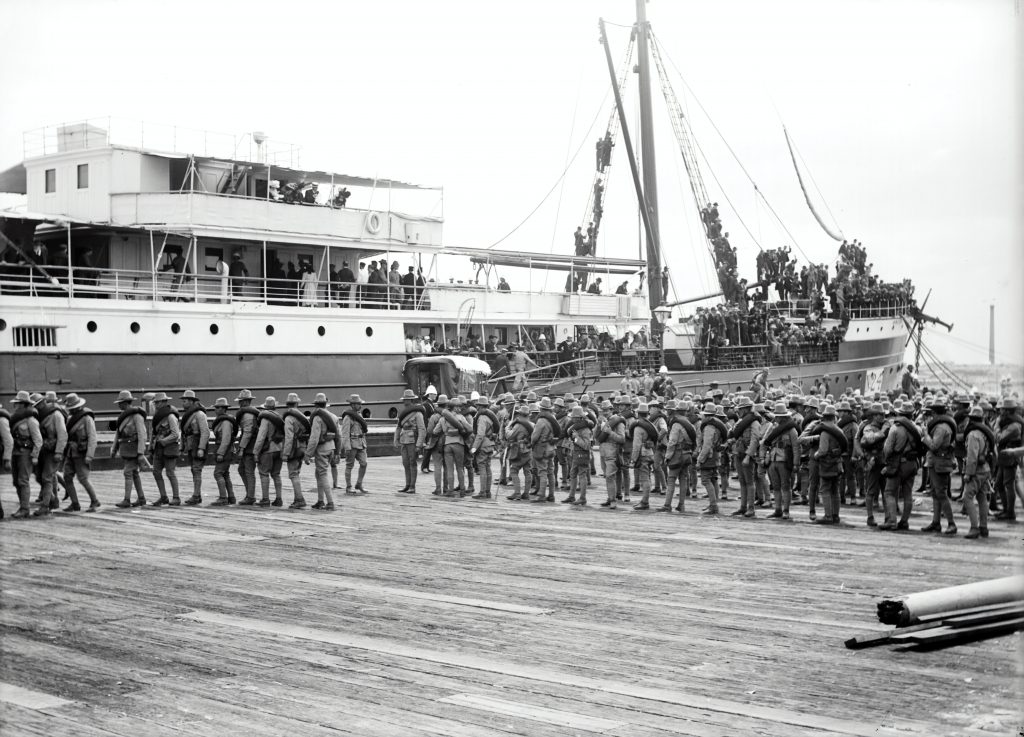In the Russian Revolution of 1905, Tsar Nicholas II was forced by the revolutionaries to make a Parliament or Duma, however, the power to make the final judgement lay in his hands. Because of this, he had already dissolved the Parliament within 75 days and changed the voting patterns of the Parliament which was elected for the third time. He had packed the third parliament with conservative politicians only and no revolutionaries were made a part of it.
Around the world, at this time, World War was also brewing and in 1914 it finally burst out. The war was divided into two European alliances: Germany, Austria and Turkey versus Russia. Each of these countries was extremely powerful causing the war to be fought outside Europe as well. Let us look at the conditions in Russian politics during and after the world war:
In Russia, people were already turning against the Tsar and against Germans. To show their protest they changed the name of St Petersburg to Petrograd. Russia lost the war and in agitation and destroyed all harvest and houses which came in the way of the retreating army. The conditions after the war were pathetic and riots had become common.


By the winter of 1917, Russian cities were divided as workers and factory labourers residing on the right bank of River Neva and fashionable gentry, official buildings, etc on the left bank of River Neva. On 22 February, a lockout occurred which gained the sympathy of other workers as well. To show their support, on 23 February strikes in almost all factories were held with many of them being led by women. The day became famous as International Women’s Day.
Peaceful protests along the left bank (where the posh gentry lived) continued and when the Tsar tried to suppress it using the cavalry, they too joined hands with the protesters and formed a Soviet, called the Petrograd Soviet.
Soon, in March, the Soviet leaders and some members of the Duma formed a provisional government, hence, taking down the monarchy in February 1917. However, this stability was soon disturbed by the return of Vladimir Lenin in Russia who had always opposed war.


He proposed April Theses which were his demands to completely transfer legislative powers to the Soviet, to transfer land rights to the peasants and to nationalise banks. Apart from this, he wished to rename his Bolshevik Party to Communist Party. His own party members were a bit surprised as they preferred the stability in politics in Russia.
Sadly, the conditions worsened as the industries and factories reigned inhumane working conditions leading to protests again. With time, Lenin’s Theses seemed to make sense to people. In September, Socialist movements reached their peak with farmers and peasants taking control of the land where they worked.
On 16 October 1917, Lenin’s efforts joined the Petrograd Soviet and the Bolshevik Party to form a Military Revolutionary Committee under Leon Trotskii. The uprising which began on October 24, made people believe in Lenin’s party. By December, the Moscow- Petrograd area fell under their power.


The Bolshevik Party, now called The Russian Communist Party, made the land, the banks, property in general under the government's influence. They failed to gain a majority in the elections for the Constituent Assembly in January 1918.
Lenin, too, felt that Russian Congress of Soviets had a more democratic approach and dismissed the Bolsheviks. Soon the Bolsheviks alone participated in the coming election (having no effective opposition) and the Parliament or Russia became a one-party state. The growing influence led to control of entire Russia during 1917-18, in the hands of:
Bolsheviks (the ‘reds’)
Tsarists (the ‘whites’)
Socialist Revolutionaries (the ‘greens’)
While the ‘whites’ became notorious for torturing peasants the growing popularity of the ‘reds’ wasn’t as famous with the non-Russian states. They failed to assert their agenda as the growth in industrialisation brought no betterment in the living conditions of the workers. The government tried to rebuild the economy through their five-year plan but the workers were not profited.


After Lenin, Stalin came to take his place and ensure emergency measures which were even more brutal. When the USSR faced grain shortage, he forced the peasants to sell their harvest to the government at a fixed price. Peasants were made to follow collective farming and in retaliation they would destroy their own harvest. The policies of Stalin only brought more unrest and confusion in the concept of Socialism in the USSR.






